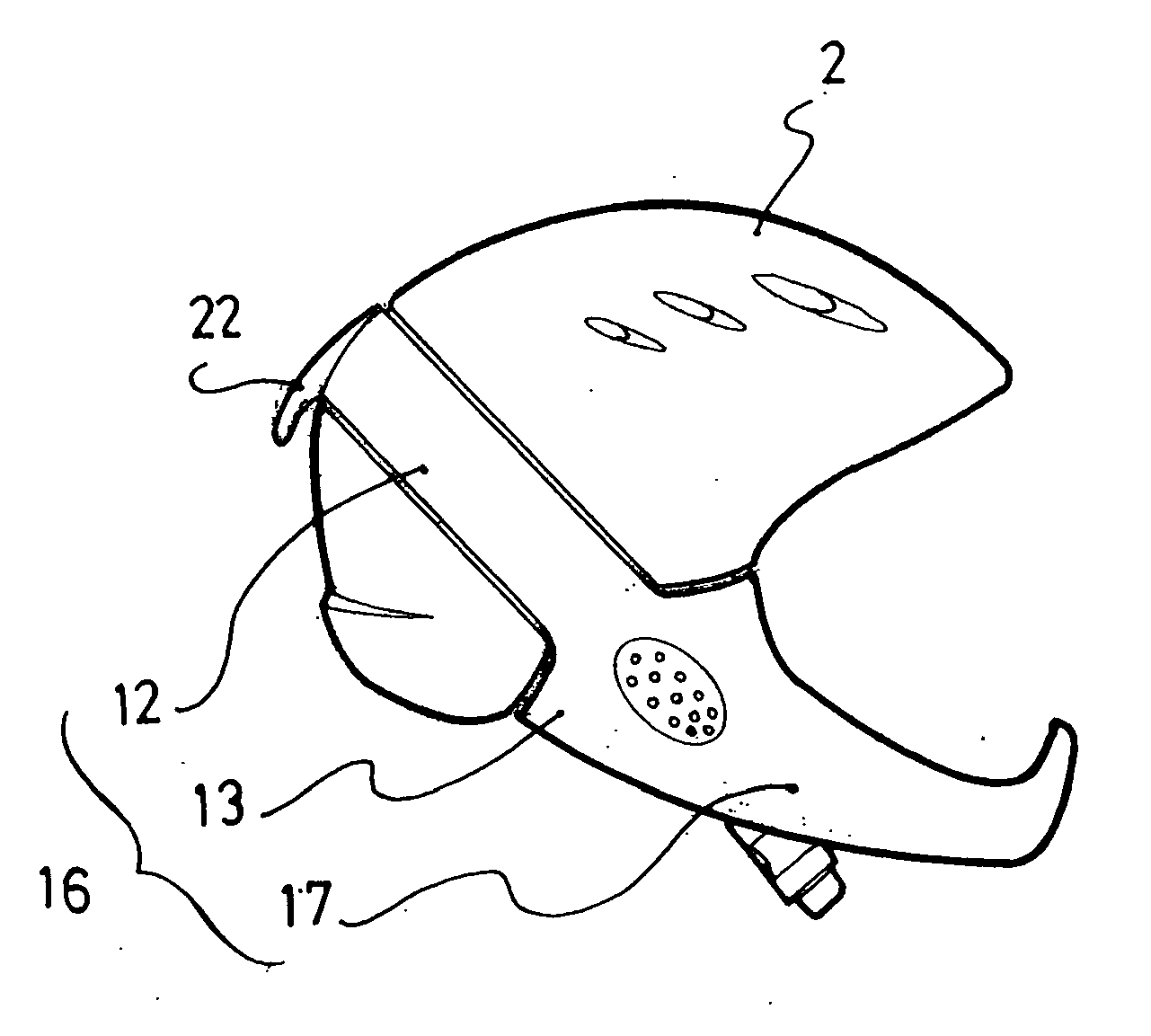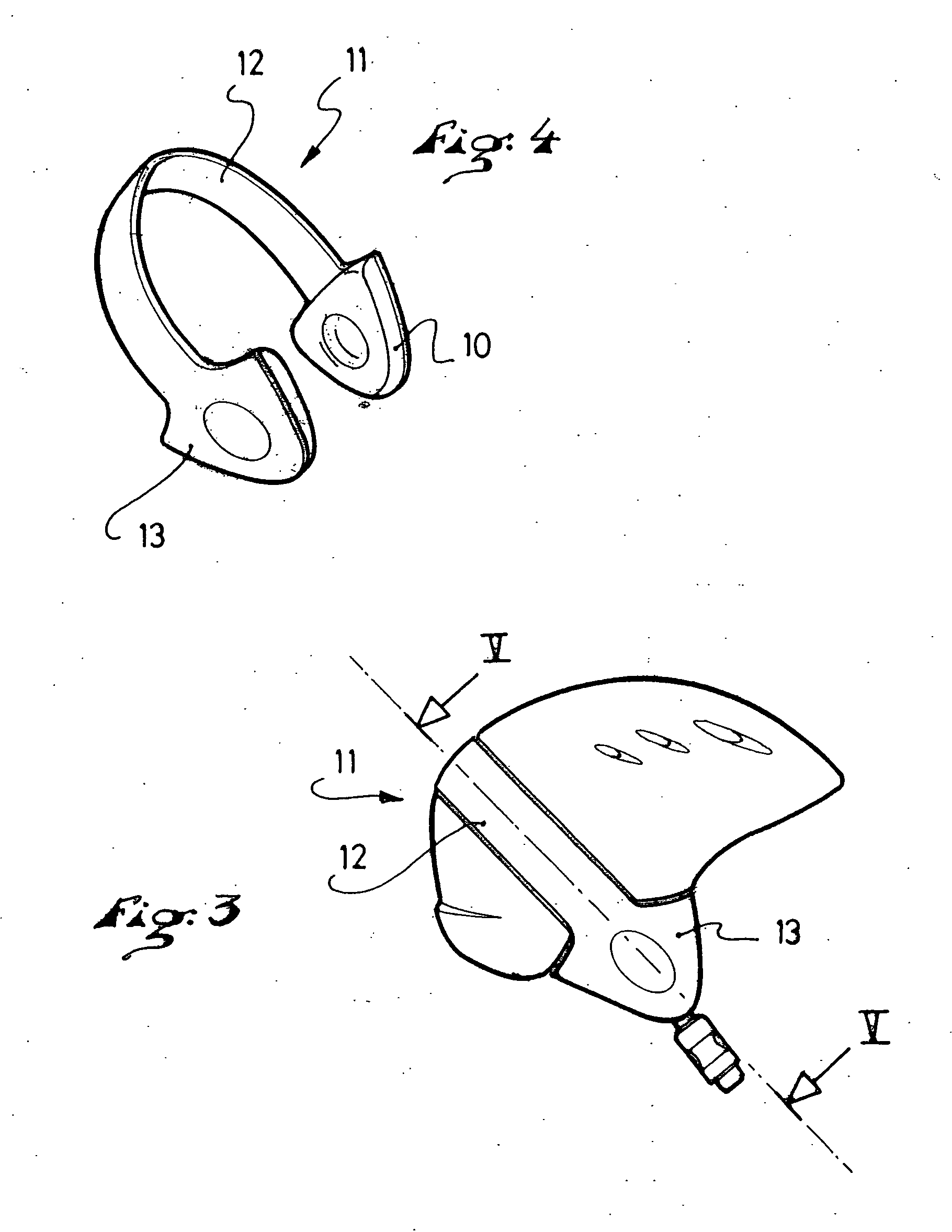Modular helmet
a module and helmet technology, applied in the field of helmets, can solve the problems of not being able to guarantee the precise positioning of helmet decorations, the helmet is rather heavy, and the helmet is not flexible, so as to achieve the effect of less expensive manufacturing and developmen
- Summary
- Abstract
- Description
- Claims
- Application Information
AI Technical Summary
Benefits of technology
Problems solved by technology
Method used
Image
Examples
Embodiment Construction
[0027]FIG. 1 illustrates a helmet that has a shell 2 made with “in-mold” technology. In this particular embodiment, the shell 2 comprises a body, in the form of expanded polystyrene, or an expanded polystyrene type of material, molded over an outer skin 3. The outer skin 3, or “micro-shell”, is provided with vents 6, in the form of through-holes, positioned in relation to openings provided in the polystyrene cap. These vents 6 allow fresh air to penetrate inside the helmet. The shell has a channel or groove 4 which runs along its outer surface from one side to the other, from the left temporal area to the right temporal area (shown in FIG. 1). This groove 4, which comprises a slight recess on the outer surface of the helmet, is adapted to receive the arch 7. The helmet is retained on the user's head by means of a chin strap 5 made of a series of flexible straps which have on each side of the helmet a front strap 8 and a back strap 9, which join together to form the chin strap itself...
PUM
 Login to View More
Login to View More Abstract
Description
Claims
Application Information
 Login to View More
Login to View More - R&D
- Intellectual Property
- Life Sciences
- Materials
- Tech Scout
- Unparalleled Data Quality
- Higher Quality Content
- 60% Fewer Hallucinations
Browse by: Latest US Patents, China's latest patents, Technical Efficacy Thesaurus, Application Domain, Technology Topic, Popular Technical Reports.
© 2025 PatSnap. All rights reserved.Legal|Privacy policy|Modern Slavery Act Transparency Statement|Sitemap|About US| Contact US: help@patsnap.com



